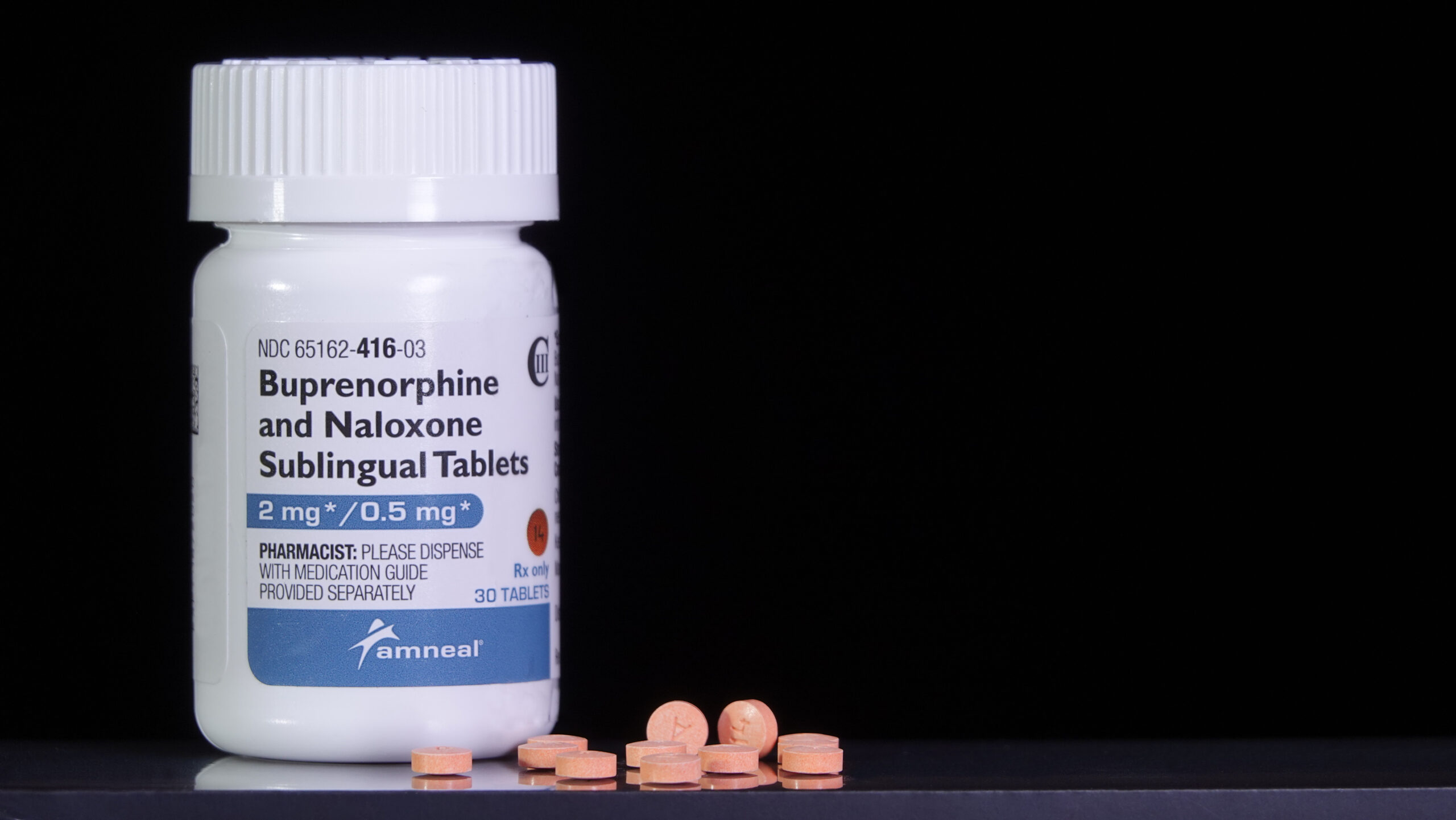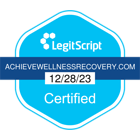Buprenorphine, the active ingredient in Suboxone has been around since the late 1960s. But it really didn’t enter the public consciousness until Suboxone became popular as a tool for opioid addiction in medication-assisted treatment (MAT) in the early 2000s.
This Achieve Wellness and Recovery article explores the concerns some people may have about the opioid nature of buprenorphine and worries that Suboxone is addictive or just “replacing one drug with another”.
What is Suboxone?
Suboxone is a prescription medicine that combines two active ingredients: buprenorphine and naloxone. It’s most often used to treat opioid use disorder, helping to reduce withdrawal symptoms and opioid cravings. It’s also worth noting that Suboxone is a controlled substance due to its potential for dependence, and it should be used as part of a complete treatment plan that includes counseling and mental health counseling.
Worrying about whether or not Suboxone is addictive though should not be a primary concern for anyone with an active opioid use disorder. Although buprenorphine is technically an opioid, it is very different from the opioids people typically abuse.
Name-brand Suboxone is dispensed as a thin, orange sublingual strip (dissolves under the tongue). Generic and other brand formulations like Zubsolv come in tablet form, but work much the same way – the tablet is dissolved under the tongue. This makes the medication easy to take as nothing needs to be swallowed with water or injected.
Is Suboxone Addictive?
The short answer is “not really”. To understand this, it’s important to understand the difference between addiction and dependence. Many people use these terms interchangeably — but they have different meanings.
What is Dependence?
Dependence is a physical condition. It happens when a person takes a drug for a period of time and their body and/or brain chemistry changes in such a way that if the medicine is suddenly stopped, they will experience physical withdrawal symptoms. It is possible to be dependent on a medication without being addicted to it.
As a partial opioid agonist which is meant to be taken daily, a person can become dependent on Suboxone, if they use it as a maintenance medication. Suboxone dependence is not an issue for people using Suboxone in a detox setting, however, because it is used for a short period of time and tapered off when necessary. Remember that being dependent on Suboxone does not mean you are addicted to Suboxone.
What is Addiction?
Addiction is a mental condition characterized by an obsession or compulsion to use (in this case a substance). Addiction and dependence often happen at the same time, but it’s possible to be dependent without being addicted and you can be addicted to something, without having a physical dependence on it.
Think of it this way: Addiction is what drives the racing thoughts, the fixation on getting more of a drug at any cost. It is the mental obsession that makes the drug the most important thing and causes a person to neglect most if not all the other priorities in their lives. This definition should help make it clear why Suboxone addiction is rarely an issue for people enrolled in a MAT program or taking it as prescribed
How Addictive is Suboxone?
The reality is that even though Suboxone does not create the intense euphoria or peaks and valleys that regular opioids like oxycodone do — becoming addicted to Suboxone isn’t impossible. It is unlikely though. Suboxone dispensed during the detox phase of treatment only usually won’t be in the system long enough to cause physical dependence.
The biggest risk of becoming addicted to Suboxone comes from buying Suboxone off the street or otherwise acquiring it illegally and using it in a way other than how it is prescribed. Someone who takes more Suboxone than they are supposed to and/or skips doses is more likely to have trouble with this medication.
Suboxone addiction in people who are participating in a MAT program and taking the medicine as prescribed is not an issue to be concerned about.
A person in a MAT program is unlikely to get addicted to Suboxone because:
- Suboxone does not create the intense high or ups and downs that cause cravings.
- Most people in a MAT program have the intent of embracing recovery and sobriety.
- MAT programs dispense Suboxone in a controlled and monitored way.
- MAT programs include counseling, support, and random drug screens and pill counts.
- MAT programs titrate (taper) the dose of Suboxone over time to ease transitions.
What’s Actually in Suboxone and How Does it Work?
Buprenorphine and naloxone are the two active ingredients in Suboxone and similar medications. The other ingredients include a gelatin-like material that makes up the film (or the binders in a tablet form) and a bit of artificial flavoring (usually citrus) to make the medicine easier to take.
- Buprenorphine: Buprenorphine is what’s called a partial opioid agonist. In plain language, that means it occupies the same receptors in the brain that a conventional opioid like hydrocodone does — but it does this without producing the same range of euphoric effects and “peaks and valleys” that help reinforce addictive behavior. Buprenorphine can relieve withdrawal symptoms (as long as it is taken within a specific timeframe after physical opioid withdrawal has already begun).
- Naloxone: Naloxone is something called an opioid antagonist. This type of medication can also occupy the receptors for opioids, however it does not deliver opioid-like effects. It can also be used to reverse an opioid overdose (in the form of NARCAN. Naloxone in Suboxone and similar medicines is present for only one reason — to prevent the medication from being misused or taken in a way contrary to directions. When taken as prescribed, the naloxone has no noticeable effect.
Suboxone Side Effects, Interactions and Precautions
Suboxone is typically administered as a sublingual film or tablet, which means it dissolves under the tongue or inside the cheek. It’s important to follow a healthcare provider’s instructions when using Suboxone, as it can cause side effects like drowsiness or dizziness. It may also interact with other medications or alcohol. Before you take Suboxone, make sure you tell the prescriber about any other medications you take, prescribed or over-the-counter. You should not drink alcohol while taking Suboxone or any medication containing buprenorphine.
Precautions and side effects of Suboxone to be aware of:
- Suboxone and similar meds can cause drowsiness or dizziness.
- Medications like Suboxone should never be combined with alcohol.
- Medications with buprenorphine, like Suboxone, must be taken exactly as prescribed.
How is Suboxone Used to Help with Opioid Detox?
Suboxone is used in two primary ways to help people with opioid use disorders or opioid addiction. First, it is often used as part of a detox protocol. A person who is addicted to opioids who enters treatment may receive Suboxone or a similar medicine once their physical withdrawal symptoms have begun.
This is an important distinction as taking Suboxone before the physical opioid withdrawal is rated at least a “12” on the Clinical Opioid Withdrawal Scale (COWS) can result in precipitated withdrawal. Precipitated withdrawal is an unpleasant, sudden intensification of withdrawal symptoms, which is of course the opposite of the objective of detox treatment. This is one key reason why Suboxone and similar medicines must only be used as prescribed and under the supervision of a trained clinician.
What is Suboxone Maintenance?
Suboxone and other buprenorphine-containing formulations are also sometimes used as a “maintenance” medication for harm reduction purposes. In this scenario, a person may receive Suboxone during their opioid detoxification, but they will continue to take Suboxone or a similar medication for several months or even a year or longer afterward.
The purpose of Suboxone maintenance is harm reduction. In other words, the presence of Suboxone in a person’s system relieves cravings for opioids and can curb “pleasure-seeking” behavior. This is because the medicine occupies opioid receptors and keeps the person’s level of dopamine a bit higher so they don’t experience a “crash” of lethargy, depression, and anxiety.
This condition, sometimes called Post-Acute Withdrawal Syndrome or PAWS is a major cause of relapse. Suboxone maintenance is not necessary for every person with an opiate use disorder, however. It is sometimes best discussed with a trained clinician, but we hope this article will help you make an informed decision for yourself or your loved one.
Beat Opioid Addiction with Achieve Wellness and Recovery
If you or a person you love is struggling with opioid addiction — Achieve Wellness and Recovery is here to help. If you aren’t sure what to do next, a conversation with us can help make the options clear for you. Achieve Wellness and Recovery is an alcohol and drug treatment program in NJ dedicated to helping people build lasting sobriety.
If you or the one you love is ready to live a better life — Call Achieve Wellness and Recovery at (833) 680-0142.
You can also click here to find out how our program can work with your insurance.





